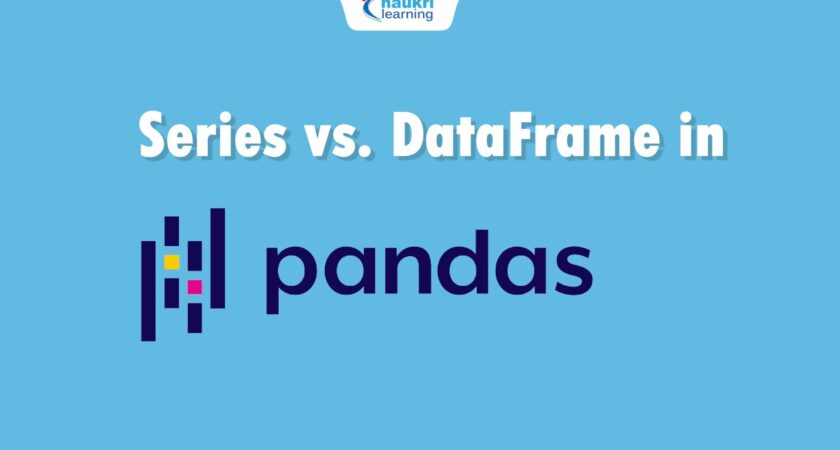Introduction to Pandas
A Python module called andas is used for data analysis and manipulation. It offers user-friendly, high-performance data structures and tools for data analysis. NumPy is the foundation for Pandas, which offers a robust interface for handling massive datasets.Read about our other post at codingshikho.com
Among the pandas data structures are:
- Series: One-dimensional data structure with labeled axes
- DataFrame: Two-dimensional data structure with labeled rows and columns
- Panel: Three-dimensional data structure with labeled pages
Pandas provides a variety of data analysis tools, including:
- Data cleaning and preparation
- Data exploration and visualization
- Statistical analysis
- Machine learning
Pandas is a popular tool for data scientists and analysts, and is used in a wide variety of industries, including finance, healthcare, and marketing.
Data Wrangling and Pre-processing in pandas
Preprocessing and data wrangling are two crucial phases in the data science process. The process of preparing data for analysis through cleansing, transformation, and manipulation is known as data wrangling. A subset of data wrangling called “data preprocessing” specializes in getting data ready for machine learning.
Numerous jobs can be included in data wrangling, including:
- Identifying and correcting errors in the data, such as typos, missing values, and duplicate entries.
- Converting data to a consistent format so that it can be easily analyzed.
- Removing outliers and other data points that could skew the results of the analysis.
- Feature engineering, which involves creating new features from existing data to improve the performance of machine learning models.
Data preprocessing is often used to prepare data for machine learning by:
- Scaling and normalizing the data so that all features are on the same scale.
- Encoding categorical data into numerical data that can be understood by machine learning algorithms.
- Splitting the data into training and testing sets so that the model can be evaluated on unseen data.
Exploratory Data Analysis (EDA)
Data analysis that looks for patterns, trends, and anomalies is called exploratory data analysis (EDA). It is a crucial stage in any data science project since, before modeling or analysis, it helps to comprehend the data and spot possible issues.
Pandas is a well-known Python package for working with and analyzing data. It offers a wide range of EDA tools, such as:
- Summary statistics: Functions for calculating summary statistics for data, including mean, median, mode, standard deviation, and quartiles, are provided by pandas. This might be helpful in determining any outliers and gaining a basic idea of the data distribution.
- Data visualization: Additionally, Pandas offers a wide range of data visualization features, including scatter plots, line graphs, and histograms. Finding patterns and trends in the data can be aided by this.
- Grouped analysis: Pandas makes it possible to organize data according to many variables, which is helpful for contrasting and comparing various data sets.
Real-World Applications using Pandas
Pandas is a well-known Python package for working with and analyzing data. It is extensively utilized in many different sectors, including as academics, healthcare, retail, and finance. Here are a few practical uses for pandas:
- Data cleaning and pre-processing: Pandas provides a variety of tools for cleaning and preprocessing data, such as removing missing values, handling duplicate rows, and converting data types. This is essential before data can be used for analysis or machine learning.
- Data exploration: Pandas offers a variety of data visualization techniques, including line plots, bar charts, and histograms, to facilitate the exploration and comprehension of data. Users may find patterns and trends in the data by doing this.
- Feature engineering: Using pandas, one can utilize current data to generate new features. This is a standard procedure in machine learning, whereby models’ performance can be enhanced by incorporating new features.
- Time series analysis: Pandas has specific time series analysis techniques, including rolling window operations, resampling, and time shifting. This facilitates the analysis of time-varying data, such meteorological or stock price data.
- Data science: Pandas has specific time series analysis techniques, including rolling window operations, resampling, and time shifting. This facilitates the analysis of time-varying data, such meteorological or stock price data.
Conclusion
For data professionals, Pandas, the Python data analysis library, is an essential tool. It is a pillar of data science because of its simple data structures, effective data cleansing, and smooth interface with other libraries. Pandas makes complicated data manipulation jobs easier, facilitating rapid decision-making and insights. Furthermore, a smooth data processing is guaranteed by its compatibility with machine learning and data visualization tools. Whether you’re cleaning, manipulating, or analyzing data, Pandas gives you the tools you need to get the job done quickly and yield insightful results. Learning Pandas is essential to become a skilled data scientist or analyst in today’s increasingly data-driven environment. It can help you gain deeper insights and make wiser judgments.
